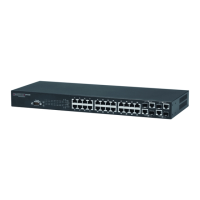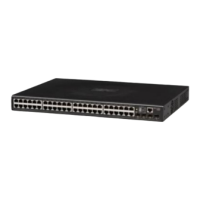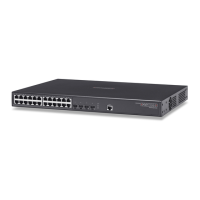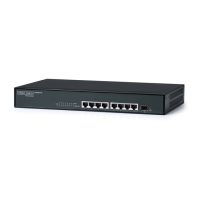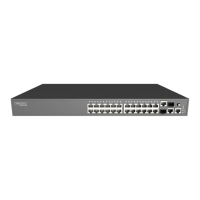C
HAPTER
3
| Using the Web Interface
Navigating the Web Browser Interface
– 76 –
MAIN MENU Using the onboard web agent, you can define system parameters, manage
and control the switch, and all its ports, or monitor network conditions. The
following table briefly describes the selections available from this program.
Table 4: Switch Main Menu
Menu Description Page
System
General Provides basic system description, including contact information 89
Switch Shows the number of ports, hardware version, power status, and
firmware version numbers
90
IP Sets the IPv4 address for management access 412
Capability Enables support for jumbo frames;
shows the bridge extension parameters
92,
93
File 94
Copy Allows the transfer and copying files 94
Set Startup Sets the startup file 97
Show Shows the files stored in flash memory; allows deletion of files 98
Automatic Operation Code Upgrade Automatically upgrades operation code if a newer version is
found on the server
99
Time 103
Configure General
Manual Manually sets the current time 103
SNTP Configures SNTP polling interval 104
Configure Time Server Configures a list of SNTP servers 105
Configure Time Zone Sets the local time zone for the system clock 106
Console Sets console port connection parameters 107
Telnet Sets Telnet connection parameters 109
CPU Utilization Displays information on CPU utilization 110
Memory Status Shows memory utilization parameters 111
Reset Restarts the switch immediately, at a specified time, after a
specified delay, or at a periodic interval
112
Interface 117
Port 117
General
Configure by Port List Configures connection settings per port 117
Configure by Port Range Configures connection settings for a range of ports 120
Show Information Displays port connection status 120
Mirror 122
Add Sets the source and target ports for mirroring 122
Show Shows the configured mirror sessions 122
Statistics Shows Interface, Etherlike, and RMON port statistics 128

